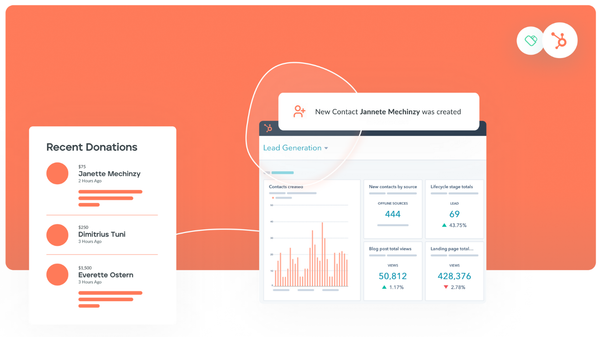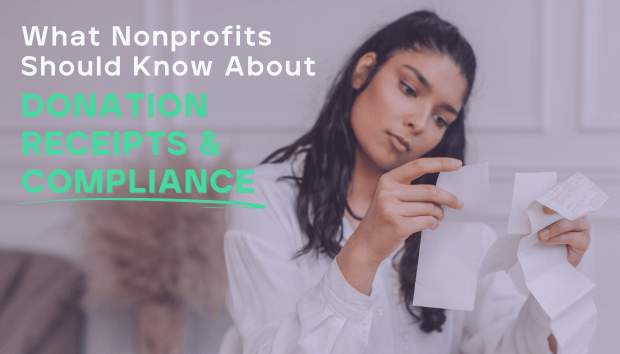Nonprofit SEO: How to Boost Your Donor Acquisition Rate
Search engine optimization can help your nonprofit expand its reach and amp up its online fundraising. Use these tips to strengthen your website design.

Your nonprofit may already have a website set up, but have you optimized it to rank on search engines? Search engine optimization (SEO) is a tool that all nonprofits should be aware of. With SEO, your nonprofit can expand its digital reach and open its donor base to wide and diverse new audiences.
If you’re not familiar with SEO or new to website design, it may feel overwhelming to revamp your website. However, with the right tools and technical know-how, your organization can easily build a strong website positioned to rank highly for search engines. As a result, you’ll bring in more organic traffic to your website and boost your donor acquisition rate.
Use these essential SEO tips to improve your website and digital presence:
- Develop a keyword strategy.
- Create high quality content.
- Optimize for mobile.
Whether you’re running an annual campaign, peer-to-peer event, or giving day fundraiser, SEO strategies can help your organization reach and engage new donors. Let’s begin.
Develop a keyword strategy.
Keywords are words or short phrases that users type into the search engine. Once a user searches a question, phrase, or word, the search engine will present a list of content, known as the search engine results page (SERP), that meets the users’ search intent.
A web design best practice is to pick keywords that potential donors are likely to search for. For example, if your nonprofit writes a blog article on different ways to support animal welfare, your keyword could be “animal welfare volunteering opportunities in [your location].” This will help put your content in front of your target audience, increasing your digital visibility.
There are many nonprofits competing over generic keywords, like “donate” or “volunteer.” To maximize your chances of ranking for the ideal audience, choose keywords relevant to your nonprofit’s mission, the locations you serve, and the issues you’re working to solve. More specific keywords have less competition from other organizations, making it easier for you to appear on the first page of the search results.
Once you select a keyword for a given piece of content on your website, use it strategically throughout the piece. With the help of a content management system (CMS), you should feature your keyword in the following elements:
- Title
- Headings
- URL
- Meta description
- Alt text
- Body of your content
Avoid using your keyword too frequently throughout your body. This practice, called keyword stuffing, can negatively affect your SEO performance. Weave your keyword naturally into your content when appropriate and use synonyms to avoid redundancy.
Create high quality content.
Search engines reward web pages that are informative, credible, and meet the users’ search intent. For example, let’s say users are looking to learn more about environmental policies in their area and how they can advocate for the environment. High quality content answering their search query should present well-supported research on environmental law, use storytelling elements to keep readers engaged, and infuse their text with non-text elements, like images and visual designs.
High quality content is also easy to read. According to Morweb’s web accessibility guide, an SEO best practice is to make your content understandable to a wide audience. Avoid using unusual words or technical terms, and if they’re necessary, provide definitions to supplement the users’ understanding. Simple language creates a positive reading experience, making it more likely that readers will enjoy your content and explore other resources on your website.
Also, consider your content’s appearance. If your content is structured in large, chunky paragraphs that take up over half a page, readers will likely click away, even if the content itself is good. To make your content scannable, break up long sections into shorter paragraphs, and organize sections under relevant headings. Between paragraphs, use transition words so donors understand the relationship between different ideas.
Optimize for mobile.
Search engines rank mobile-friendly websites more favorably, helping to expand your organization’s reach and revenue. In fact, 360MatchPro reported that mobile users made up 33% of online donation transactions last year. A mobile-friendly website is convenient for donors, allowing them to access your site anywhere—as long as they have their phone in hand.
To optimize your website for mobile browsers, double check your:
- Formatting. Your website should automatically format to any screen size, from a wide computer screen to a mobile device as small as your hand. This means that your text and images should be appropriately sized and easy to see on mobile devices.
- Navigation. It should be easy for mobile users to find your donation page, contact page, and other important resources on your website. Create a mobile-friendly navigation bar that links to your most important pages.
- Clickable buttons and prompts. All buttons and prompts should work for mobile-users so donors can fill out your forms and have access to the same functionalities as computer users.
- Loading speed. A slow page load speed can frustrate users and cause them to navigate away from your site. Ensure that all of your pages have a loading speed of just two seconds or less.
To add these mobile-optimized features, work with a nonprofit CMS work with a nonprofit CMS that will automatically make your website design mobile responsive. You can also use free tools, like Google Lighthouse, to audit your website’s performance and check for areas that need improvement.
The Gist
SEO can boost your organization’s online visibility. By putting your website in front of your target audience, you’ll be able to attract new donors and increase your online fundraising efforts. Keep your target audience in mind and frame your website content around their interests so you can best engage them. SEO is always evolving, so do your research to keep up with the latest search engine updates and algorithm changes. Good luck!
Co-Author - Murad Bushnaq, Founder and CEO of Morweb

Since its inception in 2014, Murad has acted as Creative Director and Chief Technologist to help nonprofits spread their vision online through engaging design, intuitive software and strategic communication.





